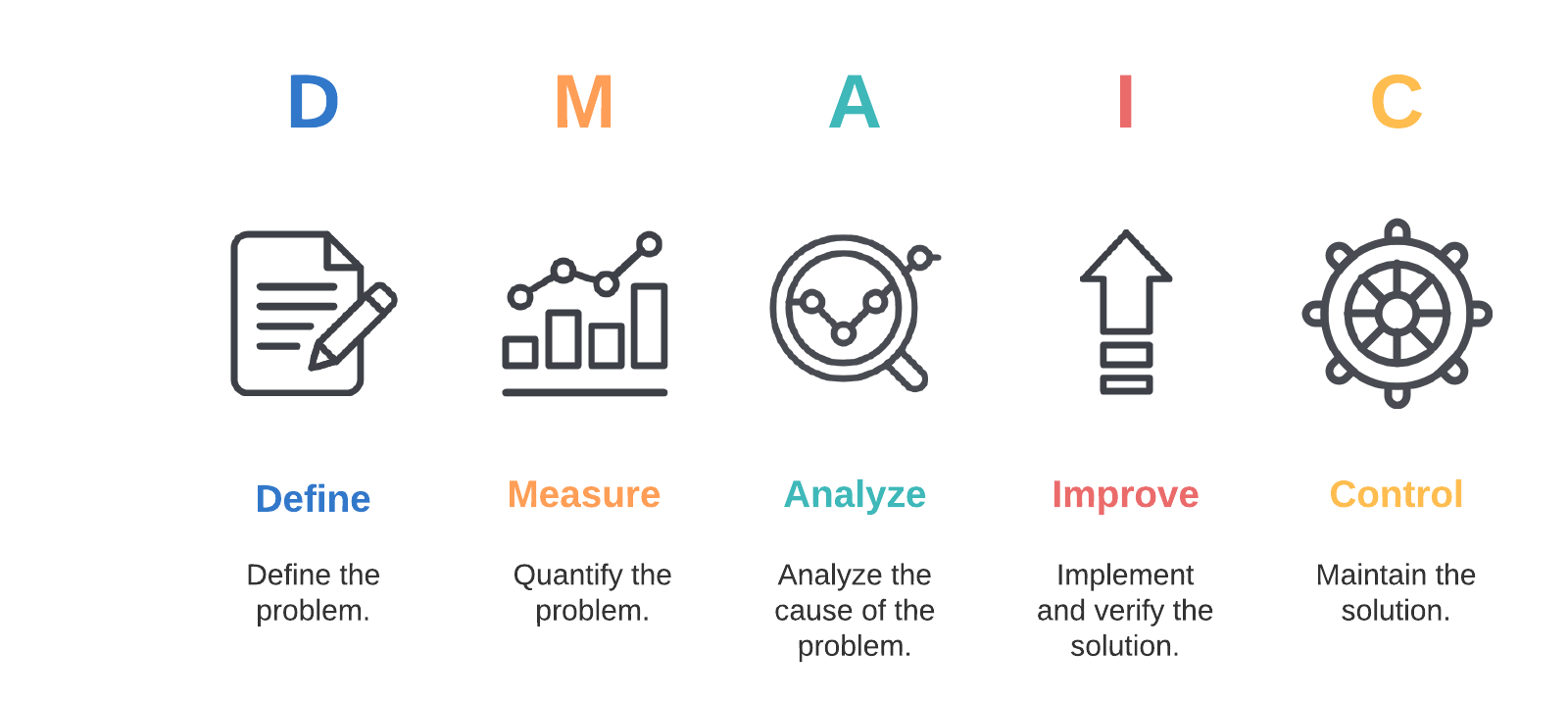Six Sigma: Comprehensive Overview
Six Sigma is a data-driven, quality improvement methodology that aims to identify and remove defects or variations in processes. It helps achieve near-perfect output, focusing on 3.4 defects per million opportunities (DPMO).
Origin of Six Sigma
- Developed by Motorola in the 1980s to improve manufacturing processes.
- Popularized by companies like General Electric (GE) under Jack Welch's leadership.
- Inspired by statistical concepts for process standardization and optimization.
Core Concepts
- Defects: Anything that doesn’t meet customer specifications.
- Process Variability: Unwanted inconsistencies in output.
- Six Sigma Goal: Limit defects to 3.4 defects per million opportunities (DPMO) to ensure near-perfect processes.
Six Sigma Methodologies
There are two primary methodologies:

1. DMAIC (For Existing Processes)
DMAIC is a structured, data-driven approach to improve current processes:
- Define: Identify the problem, goals, and customer needs (CTQs – Critical to Quality).
- Measure: Collect data to measure current process performance.
- Analyze: Analyze data to identify root causes of defects.
- Improve: Implement solutions to address root causes.
- Control: Monitor and sustain improvements with tools like control charts.

2. DMADV (For New Processes)
DMADV is used to design new processes or products:
- Define: Define project goals aligned with customer needs.
- Measure: Identify critical design requirements.
- Analyze: Develop design alternatives and evaluate options.
- Design: Select the best design and optimize it.
- Verify: Verify the design’s performance and hand it off for production.
Six Sigma Levels (Belts)
Six Sigma uses a belt-based hierarchy to identify roles:
- White Belt: Basic understanding of Six Sigma principles.
- Yellow Belt: Supports project teams with data collection and analysis.
- Green Belt: Leads small projects or works under Black Belts.
- Black Belt: Leads complex projects full-time; coaches Green Belts.
- Master Black Belt: Coaches Black Belts and oversees Six Sigma strategy.
- Champion: Executive leaders driving Six Sigma across organizations.
Key Tools Used in Six Sigma
Six Sigma uses statistical and process improvement tools:
- SIPOC Diagram: Summarizes process components (Suppliers, Inputs, Process, Outputs, Customers).
- Pareto Analysis: Identifies the 20% of causes leading to 80% of problems.
- Fishbone (Ishikawa) Diagram: Helps identify root causes of defects.
- Control Charts: Monitors process performance over time.
- Histogram: Visualizes data distribution.
- FMEA (Failure Mode and Effects Analysis): Identifies potential process failures.
- Process Mapping: Analyzes the flow of a process visually.
- Regression Analysis: Examines relationships between variables.
Six Sigma Benefits
- Reduces Defects: Improves product quality and consistency.
- Cost Savings: Minimizes waste, rework, and inefficiencies.
- Improves Customer Satisfaction: Delivers products that meet or exceed customer expectations.
- Increases Efficiency: Streamlines operations for better output.
- Data-Driven Decisions: Focuses on facts and statistics rather than assumptions.
Industries Using Six Sigma
Six Sigma is applicable across industries:
- Manufacturing: Reducing production defects.
- Healthcare: Streamlining patient care and reducing errors.
- Finance: Improving transaction accuracy and efficiency.
- IT and Software: Optimizing project timelines and reducing bugs.
- Service Industry: Enhancing service delivery and customer satisfaction.
Example of Six Sigma in Practice
A company manufacturing automotive parts identifies a defect rate of 2%. Using the DMAIC process:
- Define: Reduce defects to below 1%.
- Measure: Collect data on production defects.
- Analyze: Use tools like fishbone diagrams to identify root causes (e.g., faulty machines).
- Improve: Fix machines and retrain staff.
- Control: Monitor defect rate using control charts.
Conclusion
Six Sigma is a powerful approach to improving quality, minimizing variation, and achieving operational excellence. By using structured methodologies like DMAIC and leveraging statistical tools, organizations can drive continuous improvement and deliver value to customers.
